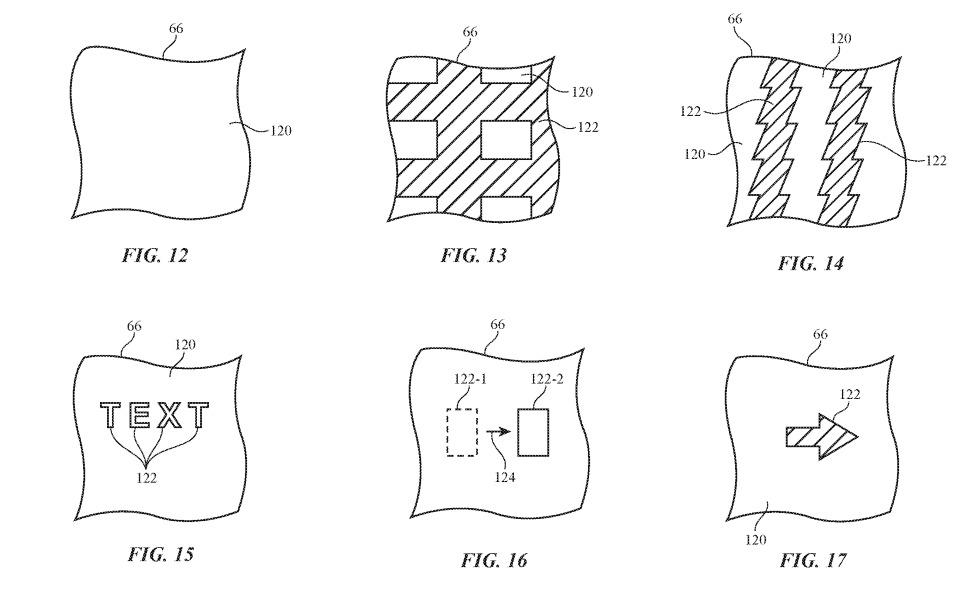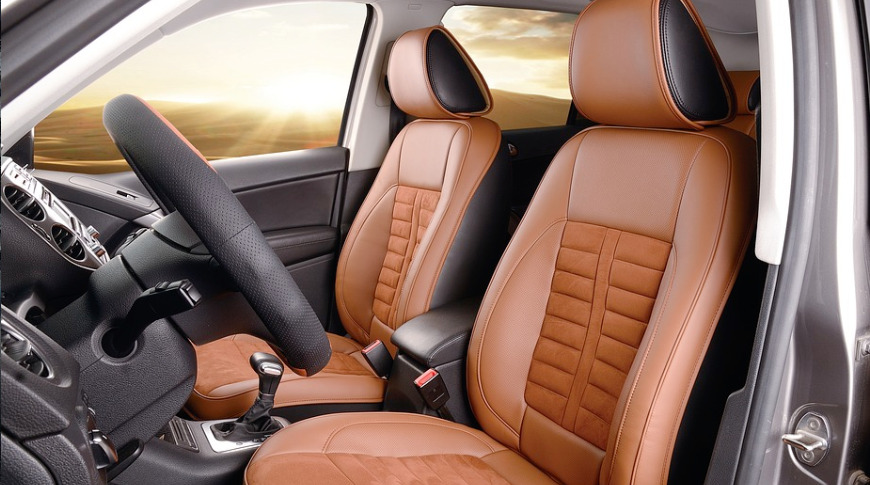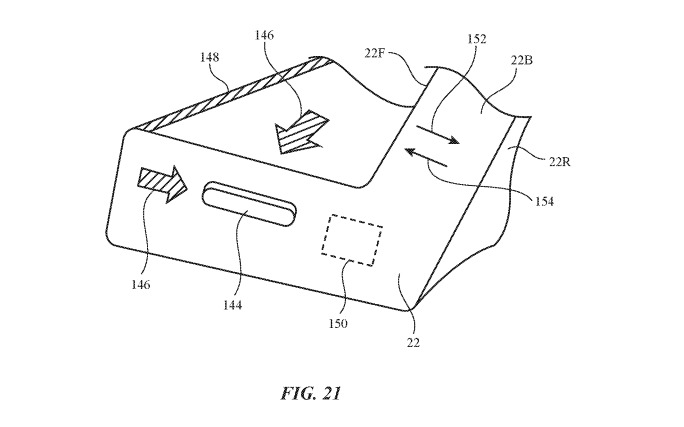Apple is researching plans for a car lighting system revolving around embedding LEDs, lenses, and fiber-optics throughout the interior, potentially to tell passengers to put on their seatbelt at the start of a journey.
Apple's ongoing automotive efforts under the masthead of "Project Titan" covers a number of areas, with the main visible work revolving around self-driving vehicle systems. At the same time, Apple has continued to come up with new ideas for other elements of the so-called Apple car, including some relating to how the inside of a vehicle appears.
One area of interest is the interior, where the passengers and driver spend most of their time interacting with the vehicle. While current lighting systems can be used for decorative purposes as well as for information, Apple reckons they can be "insufficiently flexible," do not provide enough information to users, or are "not aesthetically pleasing."
In a patent granted by the US Patent and Trademark Office on Tuesday titled "Lighting systems of vehicle seats," Apple suggests some ways a vehicle's interior could be designed to light up in unexpected ways, by taking advantage of light-emitting diodes. Though used more for displays, Apple also suggests employing OLED technology for similar illumination purposes.
The LEDs and OLEDs can be used to light up fibers and other light guides throughout the vehicle, or for larger areas the LEDs can be formed from "thin-film circuitry on a substrate." Either the LEDs will be made directly visible, as currently used, or will be hidden with light channels and fibers used to transport light to where illumination is required.
As part of this, the lighting can be used to illuminate through openings in a cover layer "formed from fabric, leather, or other materials." Lens structures could be used to guide the light through purpose-made openings in the fabric.
While this seems straightforward, Apple's intended application for the technology isn't just for use on the typical panels and dashboard of a vehicle. It is proposed the lighting system could be "integrated into a seat" or door panel.
 A variety of patterns that could be illuminated in a seat or other fabric covering using the lighting system
A variety of patterns that could be illuminated in a seat or other fabric covering using the lighting systemFurthermore, Apple's proposal includes using the system to create LED-based displays that can be inserted into practically all soft coverings of a vehicle, being visible only when light is being passed through them. Images in the patent filing suggest the inclusion of arrows and other instructional symbols, text, animations, and even simple patterns for decorative purposes.
When used in concert with embedded sensors, such as capacitive touch sensors, this could allow for a semi-hidden indicator to be turned on and off near a button as confirmation of a setting, or to provide more details about using the controls, like a sliding rectangle to show where the user can slide their finger to change a seat configuration.
To passengers, this could inform how to change the position of their seat, and even to advise passengers to put on their seat belt if it has been removed mid-transit or at the start of a journey.
Apple files numerous patent applications on a weekly basis, and the presence of a filing suggests areas of interest for the company's research and development teams. It does not, however, advise of products and services that are on the horizon, and it isn't guaranteed Apple will use the idea in the future.
This is not the only car-illumination patent Applie has applied for in recent years. In March, Apple proposed the use of fiber optic-based segments both inside the vehicle and externally, producing intricate shapes and other elements in a system that could be embedded inside layer of translucent and transparent polymers, used to hide its presence.
The 2018 "Exterior Lighting and Warning System" used a strip of LEDs around the vehicle to indicate events to other road users, such as whether the brakes were engaged at different levels or signaling an intended maneuver by the self-driving system. This latter concept was explored in another patent filing from the same year.
Apple has also proposed the use of an "Interior lighting system having window with band pass filter coordinated with broad/narrow band light source to provide privacy mode." In theory, this would consist of a glass treatment with a light filter that would allow certain bands of light through and prevent specific bands from being seen on the other side, a concept that would allow the interior lighting to use this blocked band to ensure user privacy.
 Malcolm Owen
Malcolm Owen








-m.jpg)






 Marko Zivkovic
Marko Zivkovic
 Mike Wuerthele
Mike Wuerthele
 Christine McKee
Christine McKee
 Amber Neely
Amber Neely
 Sponsored Content
Sponsored Content
 Wesley Hilliard
Wesley Hilliard

 William Gallagher
William Gallagher









18 Comments
All cars already have a "seat belt not on" warning light that works simply. The problem with all such warning systems (as well as rear center brake lights) is that they work fine until we get used to them and then they're easy to ignore. Knowing Apple, their OLED lights would not be user replaceable. Cars already have pretty good UI that drivers are quite used to. We certainly don't need to make them more complex or more costly with a bunch of OLED lights, ESPECIALLY if they're not user replaceable. I have a problem in my 2003 car where a number of the radio and other dash lights are out due to a faulty non-socketed fuse in the audio system. But it's quite complex to fix (just getting the dash out is complex) and it would cost something like $400 to get those lights working again, which is accomplished by shorting out the fuse (dripping some solder across the terminals). Not worth the cost and effort.
Should I go with:
What god? Why?
Or,
That’s annoying!
Own a vehicle 10years and most of those sensors/LEDs won’t be working anymore, but something will still be flashing telling you to spend a fortune to get them fixed.
These little things are fine, but they aren't going make Apple a major player in the automotive field. I really hope that we see Apple come out with a full automobile. Maybe I'm wrong, but if Tesla can do an excellent job building a reasonably priced car then Apple should be able to make something even better.
I can't imagine ignoring the constant warning of not having my seatbelt on when I"m driving over 3(?) MPH. I think there's a simple cable under the seat I could pull to detach that sensor, but I think it would also disconnect my power seats with the heating and cooling, plus I wear my seatbelt so I see no reason to even test that.
Something like this?
https://img.buzzfeed.com/buzzfeed-static/static/2018-10/15/19/asset/buzzfeed-prod-web-02/sub-buzz-1442-1539646699-6.jpg?downsize=700:*&output-format=auto&output-quality=auto